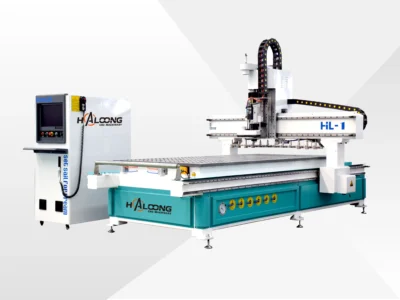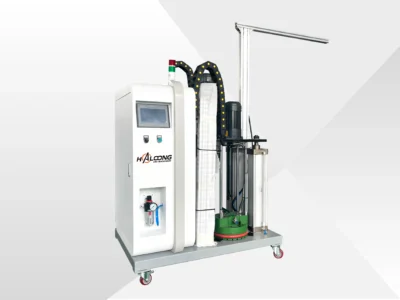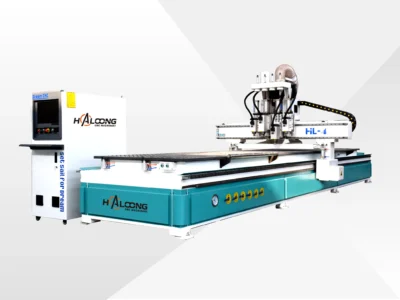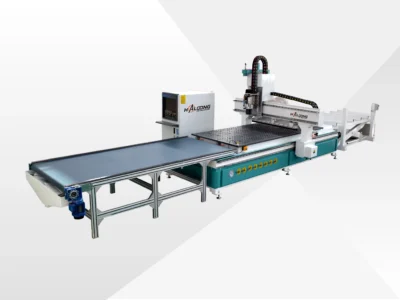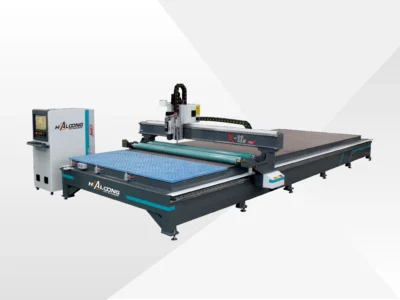
Troubleshooting Edge Banding Issues: Chipping and Corner Breakout on Furniture Panels
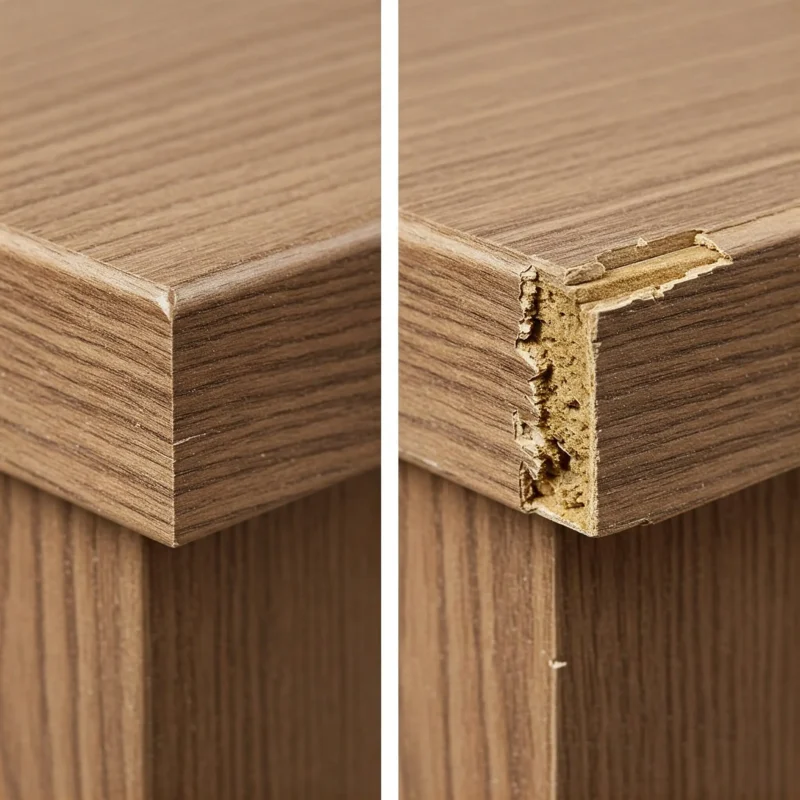
Achieving a flawless edge band is crucial for high-quality and visually appealing furniture panels. However, panel furniture manufacturers often face frustrating issues like edge banding chipping and edge banding corner breakout during edge banding. These problems disrupt production and increase rework costs. Therefore, identifying and resolving these issues quickly is essential. This blog post explores the common reasons for chipping and corner breakout during panel edge banding and offers practical solutions.
Common Causes of Edge Banding Chipping and Corner Breakout
This section details the typical reasons behind edge banding problems, including chipping and corner breakout.
Saw Unit Collision and Edge Banding Chipping
This situation is usually caused by the edgebander’s saw unit colliding with the panel. During the edge banding process, improper operation or machine malfunction can lead to the saw unit colliding. This can result in poor edge banding at best and damage to the entire machine at worst.
Scraper Issues in Edge Banding
Scraping can easily occur during edge banding when the panel height does not match the pressure beam height set on the edgebander. This is typically due to operator error when setting the machine parameters or failure to adjust the pressure beam height when changing panels.
Uneven End Trimming in Edge Banding
This phenomenon may be due to the decorative edge banding strip being too long, causing gaps and glue accumulation in the straight-grain edge banding strip. Alternatively, unstable sawing by the trimming unit can result in damaged, uneven, or protruding edges. This is usually due to poor performance of the edge banding machine’s trimming unit or improper operation by the operator.
Panel and Tooling Quality and Edge Banding
The quality of the panel substrate greatly affects edge banding success and can contribute to edge banding chipping. Low-grade materials or dull cutting tools used when sizing the panel can create rough or fractured edges. Consequently, these edges make it hard to achieve a clean edge band and can lead to corner breakout.
Infeed Track Obstructions and Edge Banding Issues
Bumps or obstructions on the edgebander’s infeed track can cause the panel to shift or vibrate during processing. As a result, this can lead to inconsistent edge banding, including chipping.
Glue Application Problems and Edge Banding Chipping
- Firstly, excessive front-to-back float of the glue roller, or overly tight reset spring tension, can cause the panel head to contact and be squeezed during entry.
- Secondly, glue buildup on end trimming saws: Cured glue on the end trimming saw blades can prevent clean cutting and cause edge banding chipping.
Scraper and Fine Trimmer Setup Errors
- Firstly, scraper blade radius off-center.
- Secondly, excessive vertical movement of the scraper holder.
- Finally, play in the center bearing of the scraper or fine trimming unit’s copy roller. If any of these conditions exist, chipping and corner breakout can occur.
Buffing Wheel Contamination and Corner Breakout
Cured glue or debris on the buffing wheel can act like an abrasive. Therefore, this can damage the new edge band and cause corner breakout during buffing.
Solutions for Edge Banding Chipping and Corner Breakout
This section provides solutions to the identified edge banding issues, focusing on preventing chipping and corner breakout.
Addressing Saw Unit Collisions to Prevent Chipping
- To begin with, inspect pre-trimmed panels for steps or unevenness.
- Next, verify the saw blades are sharp and working correctly.
- Then, check the air pressure stability if the saw unit is pneumatic.
- Finally, try flipping the panel and processing it again as a test.
Resolving Scraper Issues for Edge Banding
- First, check if the panel has swollen due to moisture.
- Then, ensure the scraper unit works correctly and moves smoothly.
- After that, inspect slides and pressure rollers for glue buildup and clean them.
- Lastly, verify that scraper blades and pre-scraping tools are secure and positioned correctly.
Correcting Imperfect End Trimming in Edge Banding
- Initially, determine if the front or rear trim saw is causing the problem.
- Subsequently, assess if the saw is cutting into the panel or leaving too much edge banding tape.
- Based on this, adjust the end trimming unit’s settings.
Mitigating Panel and Tooling Problems to Prevent Chipping and Corner Breakout
- In case of poor panel quality, use a higher-grade material to minimize edge banding chipping and corner breakout.
- Moreover, regularly sharpen or replace dull cutting tools used for panel sizing to ensure clean edges and prevent chipping.
Maintaining a Clean Infeed Track for Smooth Edge Banding
- To ensure smooth operation, ensure the infeed track is free of debris, dust, or obstructions. This will allow smooth panel movement and reduce the risk of chipping.
Optimizing Glue Application to Prevent Chipping in Edge Banding
- Firstly, adjust the glue roller’s front-to-back movement to the recommended range (typically 1-2mm).
- Secondly, ensure the glue roller’s reset spring tension is set appropriately.
- Furthermore, regularly clean any glue buildup from the end trimming saw blades to prevent edge banding chipping.
Fine-Tuning Scraper and Fine Trimmer Settings to Eliminate Chipping and Corner Breakout
- To achieve optimal results, carefully adjust the scraper blade to ensure its radius is perfectly centered to prevent corner breakout.
- Additionally, limit the scraper holder’s vertical movement to the manufacturer’s specifications (often no more than 1mm) to minimize chipping.
- Finally, inspect the copy rollers of the scraper and fine trimmer for play or looseness in the center bearings. Replace them if needed to avoid both chipping and corner breakout.
Maintaining Clean Buffing Wheels to Prevent Corner Breakout During Edge Banding
- Regularly, clean the buffing wheels to remove any cured glue or contaminants that can cause corner breakout.
Preventative Measures: Regular maintenance is key to preventing edge banding issues. Clean the edgebander regularly, adjust the pressure beam for different panel thicknesses, and check the roundness and smoothness of edges manually. Furthermore, implement a schedule for machine checks and tooling maintenance.
If you encounter persistent issues or require expert assistance in diagnosing and resolving your edge banding problems, please do not hesitate to contact our professional service team for support.
PS: If you have a problem with the edge breaking when cutting the panel, the solution is here.
Conclusion: Resolving Edge Banding Chipping and Corner Breakout
Solving edge banding chipping and corner breakout during furniture panel edge banding requires a systematic approach. Technical operators must carefully troubleshoot and analyze each potential cause to pinpoint the exact problem and apply the right solution. This requires skilled and experienced personnel with attention to detail and a commitment to quality. Moreover, companies should invest in training their frontline technical staff. Ultimately, by proactively addressing these production challenges, businesses can consistently produce high-quality furniture and achieve sustainable growth in the competitive global market.
Related Products
HALOONG CNC Cylindrical Shaft Polishing Machine
Dual Station Table Linear ATC CNC Wood Router: Automatic Tool Changer Wood CNC for Furniture Making
Why the HALOONG 12-Tool ATC CNC Wood Router Stands Out
The HALOONG 12-Tool ATC CNC Wood Router is a high-performance wood CNC machine built for exceptional efficiency and flexibility. Its automatic tool changer (ATC) switches between 12 tools in under 5 seconds, drastically reducing downtime and boosting output. Whether you’re cutting MDF, carving solid wood, or crafting intricate designs, this CNC wood router handles it all with ease. For even greater productivity, consider our optional dual-table configuration, which allows for near-continuous operation and significantly increases throughput for demanding production schedules.
Key Features of This CNC Wood Router
Here’s what makes this wood CNC a must-have:
Ultra-Fast Tool Switching
- 12-tool linear magazine: Holds a variety of tools, ready for instant use.
- Tool changes in under 5 seconds: The gantry-integrated design cuts travel time, keeping your production moving.
Versatile Material Processing
- Works with MDF, solid wood, OSB, PVC, acrylic, aluminum, and composite panels.
- Supports standard furniture joints (e.g., dowels and cams) and modern invisible connectors (e.g., Lamello, Peanut, Lockdowel).
- Perfect for cabinets, wardrobes, doors, and artistic carvings.
Customizable Worktable Options
- Options like 4'x8' (1220x2440 mm), 4'x9' (1220x2800 mm), or custom sizes available for single-table models.
- Maximize your output with our optional dual-table configuration, allowing for continuous loading and unloading on separate work zones.
- Upgraded vacuum table locks materials securely for flawless results on both single and dual-table setups.
Effortless Operation
- User-friendly controls with a clear display, network, and USB connectivity.
- Simplified design means even beginners can master it quickly. The dual-table operation is also intuitively managed through the advanced control system.
Built to Last with Precision
- Heavy-duty steel frame and high-precision gearbox for durability.
- Servo-driven system ensures smooth, accurate cuts every time. The robust construction ensures stability even during continuous operation on the dual-table model.
Cleaner, Safer Workspace
- Integrated dust collection and air-blow system keeps debris in check.
- Ideal for continuous, high-output runs without mess, making it perfect for the increased production demands of the dual-table system.
Top-Notch Support
- Free technical support, lifetime service, and remote assistance included.
PUR Glue Machine Kit For Edge Bander
Four-Spindle Dual-Station CNC Wood Router for Panel Furniture Manufactured
Maximize your panel furniture manufacturing throughput with the HALOONG Four-Spindle Dual-Station CNC Router. Expanding on the reliability of our single-station four-spindle CNC wood cutting machines, this dual-station system provides a substantial increase in production efficiency. It's designed for continuous operation, minimizing downtime and maximizing output through its smart workflow.
The clever dual-station workbench facilitates seamless alternating work cycles. While one station is engaged in machining, the operator can efficiently prepare the next batch of materials on the adjacent station. Upon completion of the first cycle, the machine instantly transitions to the pre-loaded second station. This continuous processing approach ensures no wasted time, making it a key asset for high-volume furniture production.




